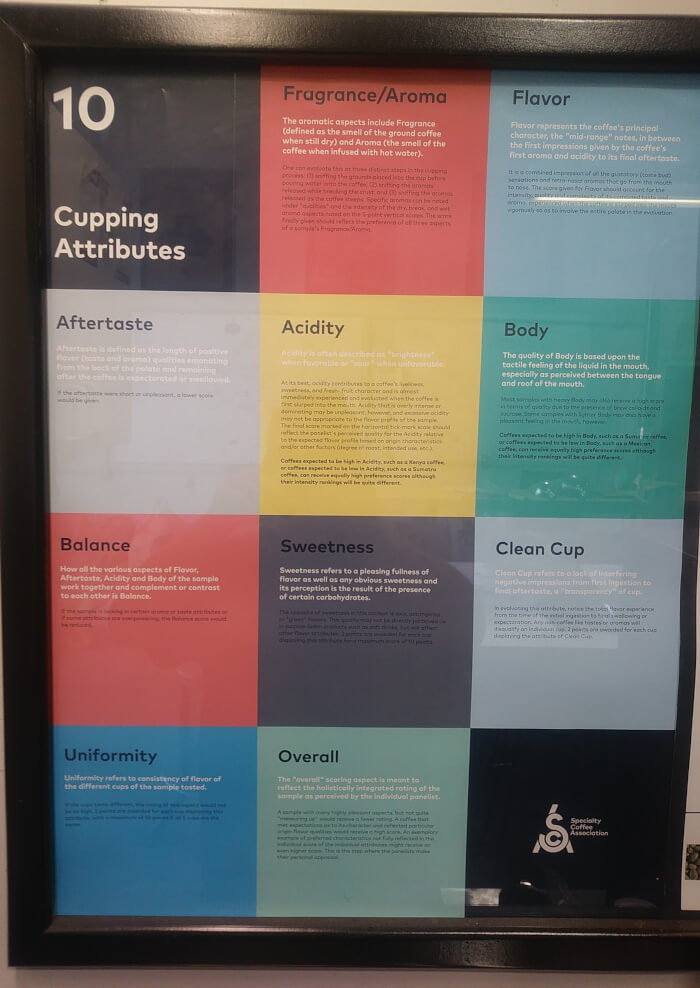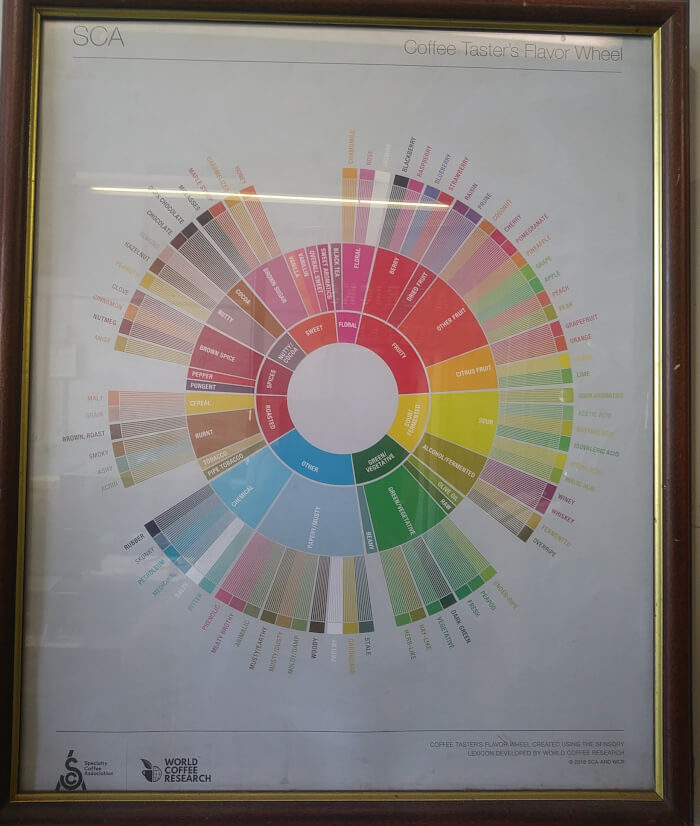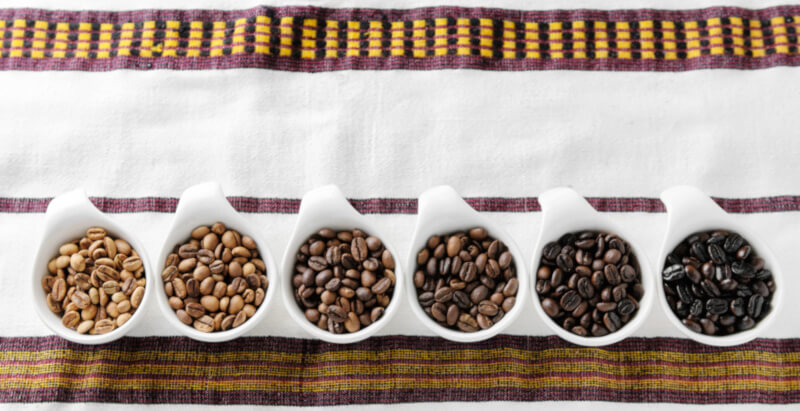
Is Coffee an Acid? Everything You Should Know About Coffee Acidity!
We all know that coffee is acidic. But what does that really mean for our taste and health? In this blog post, we'll take a look at coffee acidity and what you need to know about it. We'll also discuss how it affects taste and health, and give you some tips on how to choose a coffee that is right for you.
Now here is some incentive, if you read this article to the end, you will understand all of the items listed below. Most importantly, you will grasp what you need to know about coffee and the acidity in coffee for the next time you make a purchase or are drinking coffee. Let's begin.
Acidity in coffee what you need to know!
1. Coffee acidity 101.2. Understanding the acids in coffee.
3. Understanding the acids to degrade.
4. Removing acid from coffee beans.
5. Slow roasting low acid coffees
6. Roast effect on the acidity level
7. Easy Method to Score Coffee and Acid.
8. Slow roasting affects taste
9. Easy method to Score coffee acid
1.Acidity in coffee what you need to know!
The coffee plant is among the most acidic in the plant kingdom. As a result, the coffee seed (bean), which acts as a store for the plant, is highly acidic in its composition.
So while it's true that coffee isn't an acid, it is nevertheless derived from an acid-containing fruit. And like all acid-containing foods, coffee can have an effect on your stomach acid levels, your bladder, and GI tract.
While coffee is unlikely to cause problems for all people, if you have acid reflux, IBS, GERD or other gastrointestinal issues coffee can trigger symptoms. Keep in mind, as we age so does our body. Our physiology can change and what may not have bothered us when we were younger in life may do so as we get older.
So whether you have an existing sensitivity to coffee's acidity, want to start making choices to avoid potential future issues, or just want to learn the inside scoop on coffee, I have written this article to be helpful to you.
To understand coffee acidity, we first need to understand what it is.

2.Coffee Acidity 101
Acidity can have two different meanings when it relates to coffee. One emphasis is for the industry professionals and the other meaning concerns coffee drinkers.
For industry professionals, "acidity" is one of several Specials coffee Association's (SCA) cupping attributes that are used to judge a coffee's quality. For coffee drinkers, acidity is often related to the level of acidity in a brewed cup of coffee. These two most common meanings of the word:
-
Acidity: A quality cupping attribute.
-
Acidity: A measure of a coffee's acid concentration.
Acidity of coffee as quality signal.
In the industry, "acidity" points to the liveliness of a cup of coffee. Attributes such as sweetness or fruity character speak to the coffee's acidity and are used to judge the quality of the subject coffee. Allowances are made for country of origin and other factors as some origins might have an inherently more bright or less intense acidity.
Acidity taken in to consideration with some of the 10 attributes such as; aftertaste, body, balance, and other factors, a coffee can be contextually evaluated for each origin's inherent characteristics and then scored. Ten attributes are scored from 1-10, a final score is determined by adding all the attribute scores against a 100 point system.

Acidity of coffee as level of acid concentration.
For many consumers today, acidity refers to coffees concentration of acidic compounds that occur naturally in the coffee bean. Essentially, how high or low in acid coffee beans might be. This is best measured by pH, which I will explain later, and is a key point you need to understand to protect yourself.
There is a connection when discussing acidity between taste and acid levels. Many people note that the bright notes with higher acid coffees can also lead to bitter flavors.
In fact, there are certain natural acids in coffee that affect taste and not only leave a bitter perception on your palate, but also contribute to a higher concentration of acid and a more acidic coffee overall. Let's take a look at some of these acids.
3.Understanding the acid's in coffee
Coffee contains proteins and amino acids, sugars such as sucrose, polysaccharides, and various reducing sugars. However, coffee has a list of various acidic compounds such as: malic acid, quinic acid, acetic acid, and Chlorogenic acid to name a few. Coffee beans are full of acid.
Some acids form during roasting
Researchers have discovered that certain Aliphatic acids, such as formic, acetic, glycolic, and lactic acids are created during the roasting process of coffee beans. [citation Ginz, M., Balzer, H., Bradbury, A. et al. Formation of aliphatic acids by carbohydrate degradation during roasting of coffee. Eur Food Res Technol 211, 404–410 (2000). https://doi.org/10.1007/s002170000215]
As carbohydrates break down during the early stages of roasting coffee beans, aliphatic acids can increase anywhere from 40%-100%.
However, out of all the various acids present in coffee beans, there is one particular group of acids that give people the most trouble. Not only is it an issue for many peoples' health, but it's also hard to get rid of! Let me explain why this happens.
4.Understanding the acids to degrade
As I mentioned, the coffee bean is one of the most acidic plants in the world, with about 8% of its dry weight being composed of acids.
Coffee beans are made up of both volatile and nonvolatile acids. Volatile acids easily degrade while nonvolatile acids do not break down as quickly. Acids that volatilize (evaporate) during roasting are referred to as volatile acids. Even though the roast gets rid of some acids, plenty of strong nonvolatile acids like CGA, citric, malic, and quinic stay. Therefore, coffee beans maintain a lot of their natural acidity even after the roast..
For many people, Chlorogenic acid (CGA) can be problematic. CGA makes up 3-4% of coffee's total dry weight--nearly half of the 8% of acidic compounds in coffee. Unfortunately, it gets worse: CGA is known to affect those who are sensitive to acidity.
This means that 1) coffee is full of chlorogenic acids, 2) they are tough to remove, and 3) they can affect people's health. So if you're having health problems caused by coffee or trying to avoid acidity in your diet, it's important to know this fact and stay away from coffees that contain high concentrations of these acids.
However, there is some interesting and good news that I have discovered as roasting professional in the industry for nearly 20 years. Coffee's CGA is part of a group of Phenolic compounds, with roughly 80% being Caffeoyl-quinic acids. These caffeoyl-quinic (CQA) acids exist in different arrangements (scientists refer to them as isomers).
Scientists have learned that the most predominant Caffeoyl-quinic acid, 5 CQA, degrades during high temperature and very long duration roasting (slow roasting). Other Caffeoyl-quinic acid isomers 4-CQAI and 3 -CA also degrade under similar conditions of time and temperature.
Target acid compounds in coffee beans.
Studies have shown that Chlorogenic acids (CGA), which are the primary culprit in affecting people with various GI maladies and other medical conditions can be triggered by coffee's acidity. CGA's are nonvolatile acids and are difficulty to remove. For developing a truly low acid coffee profile then, CGA's are the target acid for mitigation or destruction.
Now let's look at the most of the most common approach's to dealing with CGA. Then I will explain to you the most effective means of reducing it as detailed by the scientific journals.
5.Removing acid from coffee beans
There are a number of ways to attempt to minimize acidity levels in coffee. The three most popular "coffee acid reducers", are pre-roast treatments, and post-roast brewing methods, and additives to the coffee post-brew.
Pre-Roast Treatments
Pre-roast treatments are a special processing of the green (raw) coffee beans before they are roasted. The process can involve steam baths or other various methods that try to minimize the coffee's acidity before it is roasted.
This can have a moderate impact in acidity levels but may affect taste. This process may or may not be done at the coffee roastery and may not be organic.
Post-Roast brewing methods.
Post-roast brewing methods involve brewing the coffee after the coffee beans have been roasted. The cold brewing method, often referred to as "cold brew", involves cold water and time.
Instead of hot brewing the coffee, which gives a very fast and high level of flavor extraction, the cold brewing uses cold water with a protracted brew time of between 12 to 24 hours in order to achieve extraction.
Cold brew coffee is increasingly popular today and can moderately impact the coffee's acidity level and will affect the taste. This is done by coffee drinkers at home and typically stored in their refrigerator.
Post-Brew Additives
For brewed coffee, some coffee drinkers choose to use various additives such as milk, specialty creamers, and baking soda among other things to mitigate acidity. All of which have their drawbacks and all of which create others issues, and certainly will impact flavor. While these post brew additives may only be slightly effective in reducing acidity.
Pre-Roast Treatments, Post-Roast brewing methods, and Post-Brew additives can be helpful. However, they are not the most effective in reducing acidity and they can add cost, hassle, affect taste, and even lead to other issues dealing with lactose intolerances and diabetes to name a few.
There is a much easier solution. Now lets look at the most effective means in reducing coffee acidity.
6.Slow roasting low acid coffees
Slow roasting is an artisan style roasting method that uses high temperature and longer roast time duration to remove acids from coffee naturally through a process called thermal degradation. This means all of the acid removal is accomplished during the roast. Before I explain the nuts and bolts of the process, just consider how natural, efficient, and practical slow roasting is compared to other methods.
- The most natural, because there would be no pre-treatments, additives, or special brewing processes.
- The most efficient, since heat is the best means to degrade and destroy acid and there are no additional steps.
- The most practical, because no matter how a coffee was brewed or consumed, hot, cold, with or without add-ins, the coffee would be low acid from the time you bought it.
It's very simple, slow roasting is the single most natural and effective means to reduce acidity in coffee. This whole process is done naturally through thermal degradation.
Thermal degradation
Roasting coffee involves time, temperature, and airflow. Slow roasting roasts the coffee for a much longer duration at a higher temperature.
The heat is WHAT you put in the bean. The airflow is WHERE you place it. The time is HOW long you keep it there.
This extended roast method brings the coffee to the requisite external and internal bean temperature needed to decompose and vaporize these nonvolatile acidic compounds. The longer duration of the roast, continues the process of degradation of the acids until the acids are completely vaporized or thoroughly diminished to trace levels.
Now developing a roast strategy for any coffee is called a roast profile. Roasters compose this profile as a strategy as they approach the coffee bean to achieve certain flavor notes or aromas. This is standard fare for all coffees roasted.
Slow Roast Profile
However, to develop a slow roast profile for low acid coffee, a roaster must account for sufficient time and temperature to degrade the nonvolatile acids, such as chlorogenic acid, which is very difficult to degrade.
Unfortunately, nearly 100% of coffee roasted today does not significantly diminish nonvolatile acids, which is why millions of people are suffering now and many more will be suffering needlessly in the future as the population ages, because modern roast profiles do not account for nonvolatile acids.
With slow roasting, the increased time of roasting and the sustained duration of higher heat is what significantly degrades both volatile and nonvolatile coffee acids during the roast. As a result, CGA's and CQA in particular, which are the main culprit for acidity levels in coffee beans, are virtually eliminated. In fact, many of our slow roasted coffee have the best pH scores in the industry.
7.Roast effect on the acidity level
Even while some of the Aliphatic acids, which I mentioned early can increase by between 40% and 100%, the prolonged duration and temperatures of the slow roast works to degrade first the nonvolatile then the remaining volatile acids.
In the green (raw) coffee bean, Chlorogenic acid constitutes about half of the coffee beans total weight by acid content. After slowing the coffee bean, CGA is reduced to near trace amounts. In many coffees, the presence and concentration of acid is reduced by over 160%. Making slow roasting low acid a viable option for virtually anyone with a acid sensitivity.
8.Slow roasting to various degrees.
Great news about slow roasting is the flexibility in degree of roast. This is great news for people that enjoy lighter roasts. You can enjoy low acid coffee whether a dark roast or a light roast. Slow roasting is so effective that even a light roast is very low in acid and dark roasts are even that much more low in acid.

Light Roast Coffee
Slow roasting is so effective that a light roast is very low in acid with over 70% reduction in acid content. Slow roast has much less acid than traditional dark roasted coffees and usually by a lot. So if you do not prefer dark roast coffee beans, you can chose a light or even medium roast.
Dark Roast Coffee
If you favor a dark roast, slow roasted low acid coffee beans are ideal. Not only are the coffees already low acid because of the slow roasted profile, the degree of roast for a dark roast coffee further increases the time and temperature reducing CGA to near traces amounts. A dark roast coffee can have more than 90% less acid.
9.Slow roasting affects taste
Roasting any coffee has an affect on its taste. Slow roasting has an ever greater affect on the taste of the coffee. Most modern style roasting today, is lower temperatures for shorter durations.
These are acidic profiles that produce coffees that are acidic. The concentration of various nonvolatile acids such as CGA is greater and that is reflected in the taste. These coffees bare bright, fruity notes, and can contain a sharp bitter flavor and also it can make the coffee taste sour.
This not a criticism of that approach of roasting "it's a free country". However, when you drink coffee if you don't want a bright and fruity cup, any coffee slow roasted low acid coffee brands would be more toward your taste profile. Plus, you do not have to deal with the concentration of CGA and other acids on your system every day.
If you like more full bodied, rich and smooth notes, with hints of chocolate. Look no further than slow roasted low acid coffee.
10.Easy Method to Score coffee acid
Coffee's concentration of acid is best measured by it's pH level on the pH scale. Coffee's pH score speaks to the coffees affect on human physiology. Coffee's inherent high concentration of natural acids, can a cause symptoms for coffee drinkers struggling with acid reflux symptoms, stomach acid, IC, IBS and other gastroesophageal and gastrointestinal issues.
The higher the concentration the more acidic the coffee is considered.
For more information on the pH scale please read my article measuring low acid coffee.
Slow roasted coffee scores among the least acidic of any coffee with scores differing among the low acid coffee beans based on their degree of roast (how dark they are roasted). While most coffees today score in the pH 4.7 to 5.0 range, Mavericks coffee score upwards of 6.3. Based on the logarithmic nature of the pH scale, an .1 increase is a 10% reduction in acid. For example, the difference between a national brand of coffee scoring 4.7 and Mavericks at 6.3 is 160% less acid. The higher the number the better.
11.What you learned about coffee
Good job you did it. So now you know, how acidity relates to coffee and what makes coffee acidic? Plus, you know the best means to target and remove the acid, and the most effective means of making less acidic coffee. You also know what a kind of pH score you should look for when making your next purchase.
And lastly, you now about Mavericks. We have been slow roasting coffee since 2004. It's low acid and made with organic ingredients. ANd we have the best independently verified pH scores in the industry.
-Ryan
FAQ
What does it mean when coffee is acidic?
When consumers say coffee is acidic, that means the coffee beans have a very high concentration of natural acids and a very low pH level. This is primarily a result of shorter duration and lower temperature roasts, which allow the volatile acids inherent in coffee to remain in the coffee bean.
What you should know about low-acid coffee?
With low acid coffee The finished acidity of low acid coffee is much more neutral for the coffee drinker. It's low acidity mitigates many sensitives for people with stomach acid issues, acid reflux, GERD, and other physiology conditions to high acid foods that act a trigger to painful side effects. If you looking for low acid beans, slow roasting will make coffee less acidic.
Is coffee high in acid?
Yes, raw coffee is inherently high in various organic acids that are derived from phenols of the coffee plant. Coffee is both high in organic acids and antioxidants. Primarily, coffees finished acidity is by design of roast with a low pH or high pH dependent on the roasters intention.
Tell me the PH of coffee?
Roasted coffees pH can range from pH 4.5 to pH 6.3. Finished acidity is predetermined by the roasters intention. Since coffee is a thermally charge beverage, roast time, temperature, and degree of roast will determine it's pH and finished acidity.
